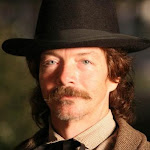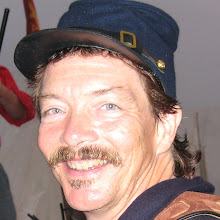 Kent Courtney (on guitar) and members of the Past Players in Chambersburg, PA
Kent Courtney (on guitar) and members of the Past Players in Chambersburg, PAPhotograph courtesy Randolph Harris
"We are stepping off of the battlefield to tell the untold stories of citizens and the communities who were forever changed by the Civil War," said Mickey Rowley, the Department of Community and Economic Development's deputy secretary of tourism. "In doing this, we are fulfilling our responsibility to present Pennsylvania's rich Civil War heritage in an easy and accessible way for future generations to explore."
The Pennsylvania Civil War Trails program educates people about the women and children under siege; African-American contributions in the defense of the state; and the endurance of ordinary citizens during a time of great unrest.
The stories are told through 40 new "story stops," which are living history presentations, and at more than 25 historic sites in and between communities of Gettysburg, York, Hanover, Chambersburg, Carlisle, Harrisburg, and Wrightsville. "By following the trails throughout the Dutch Country Roads region, visitors will finally get to hear the stories that have been passed on from generation to generation," Rowley said. "In addition to a greater understanding of the effect the Civil War had on the people of Pennsylvania, visitors will see a different side of the communities embroiled in the conflict." Two distinct trails were developed in a partnership among the Pennsylvania Tourism Office, the Pennsylvania Department of Transportation and the Pennsylvania Historical and Museum Commission: The companion brochure, which is available at the state's Welcome Centers and at destinations featured along the trail, includes additional stories and a map to guide visitors along the trail route. For more information, visit: www.visitPA.com/civilwar. The Pennsylvania Civil War Trails program is lead by the Pennsylvania Tourism Office and includes participation by the Pennsylvania Historical and Museum Commission, Pennsylvania Department of Transportation, tourism and promotion agencies, county historical societies, Civil War heritage attractions, park service interpreters and area colleges and universities. For five years, Kent Courtney has been a part of the Civil War Trails Program and has been an evangelist for the benefits of heritage tourism. His message has been, "The Civil War was the pivotal experience that shaped our country - politically, militarily, industrially and culturally." The Civil War Trails program is a fun way to explore our cultural heritage in Pennsylvania. Here are links that go to some of the coverage associated with the Civil War Trails program:
In the words of Abraham Lincoln, the Civil War truly "brought a new birth of freedom.". Shelby Foote said, "We are what we are, today, both good and bad, because of the Civil War".
NBC25, Hagarstown, Maryland video:
http://your4state.com/content/fulltext/?cid=62692
WGAL, Channel 8, Lancaster, PA slideshow:
http://www.wgal.com/slideshow/hotlinks/19320914/detail.html
http://tinyurl.com/cw295v













